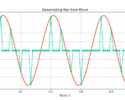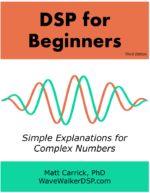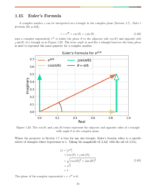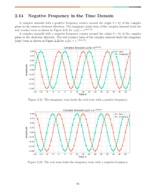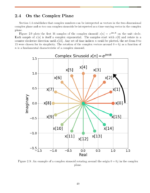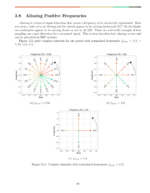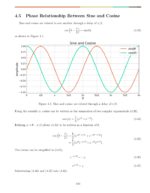Table of Contents
Introduction
This blog post demonstrates how to find the frequency response of the single pole IIR filter and then plots the magnitude and phase responses for multiple ![]() values.
values.
Check out these other blogs on DSP:
Single Pole IIR Impulse Response
The single pole infinite impulse response (IIR) filter is an incredibly efficient filter!
The impulse response of the single pole IIR is
(1) ![]()
The filter uses two weights, ![]() and
and ![]() . The weight
. The weight ![]() is applied to the input signal x[n] and the value is typically small (
is applied to the input signal x[n] and the value is typically small ( ![]() < 0.1 ). The weight
< 0.1 ). The weight ![]() is much larger than
is much larger than ![]() and is applied to the feedback y[n-1]. The smaller the
and is applied to the feedback y[n-1]. The smaller the ![]() the more impact the feedback has on the output and the smoother (and more narrowband) the filter.
the more impact the feedback has on the output and the smoother (and more narrowband) the filter.
The single pole IIR may also be referred to as an exponential moving average (EMA) filter.
Single Pole IIR Frequency Response
The Z-transform is applied to (1),
(2) ![]()
Equation (2) is simplified by gathering like terms,
(3) ![]()
(4) ![]()
The transfer function for (1) is written as the ratio of Y(z) to X(z),
(5) ![]()
The frequency response ![]() is created by substituting
is created by substituting
(6) ![]()
into (5) resulting in
(7) ![]()
Simplify (7) by definining
(8) ![]()
such that the frequency response is now
(9) ![]()
Magnitude of the Frequency Response
Example Plots
The magnitude and phase of the frequency response (9) is given below. The plots show that as ![]() decreases the filter becomes more narrowband and has more phase linearity.
decreases the filter becomes more narrowband and has more phase linearity.
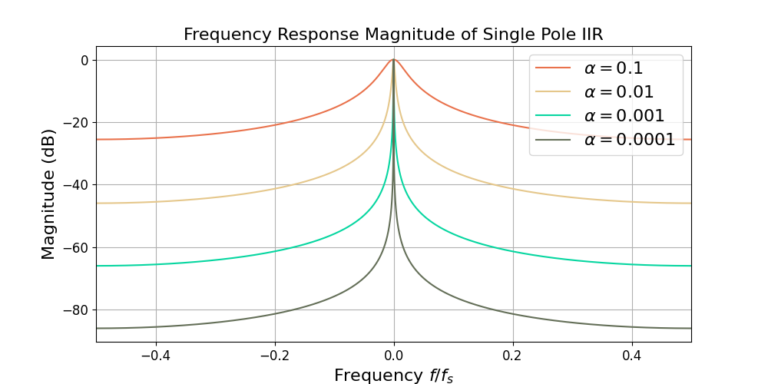
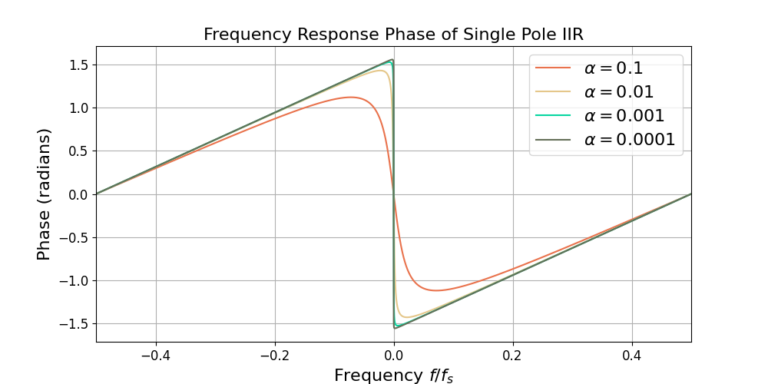
Conclusion
This blog demonstrated how to find the frequency response of the a single pole IIR filter and plotted the phase and magnitude responses for several ![]() values.
values.
Check out these other blogs on DSP:

![A BPSK signal s[n], real Gaussian noise w[n], and the received signal x[n] = s[n] + w[n] for SNR = 20 dB](https://www.wavewalkerdsp.com/wp-content/uploads/wordpress-popular-posts/15621-featured-125x100.png)
